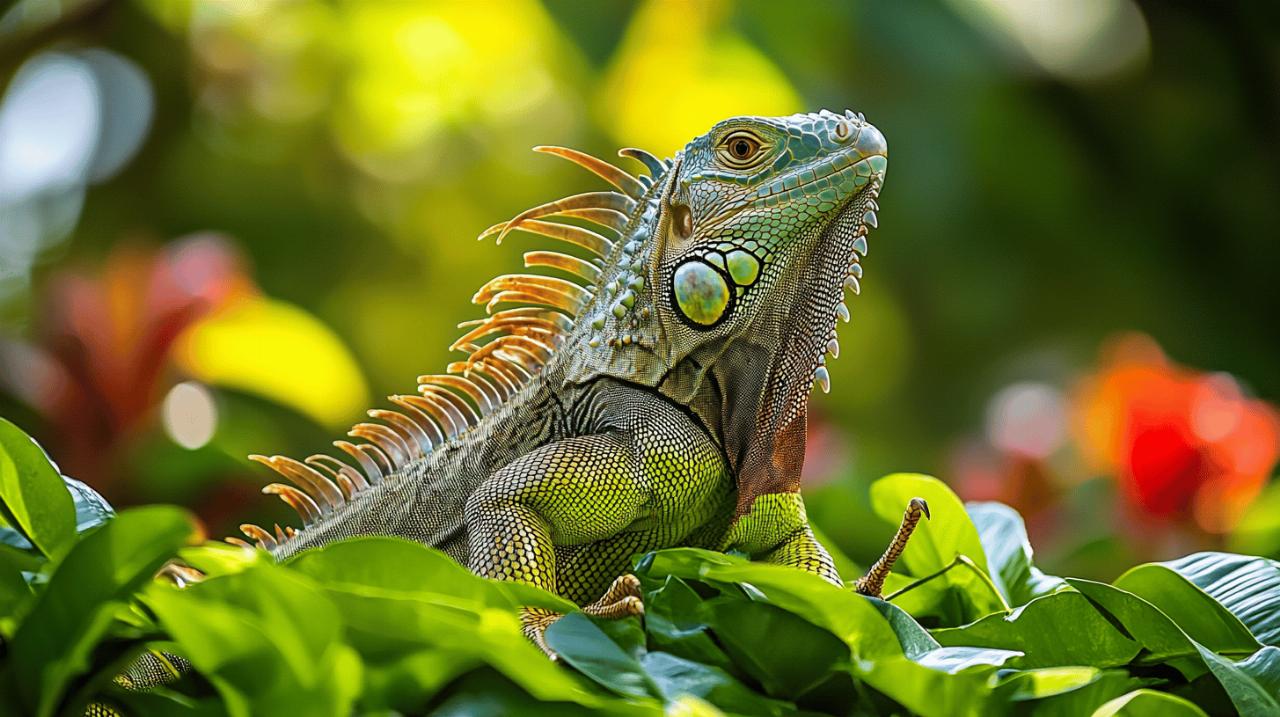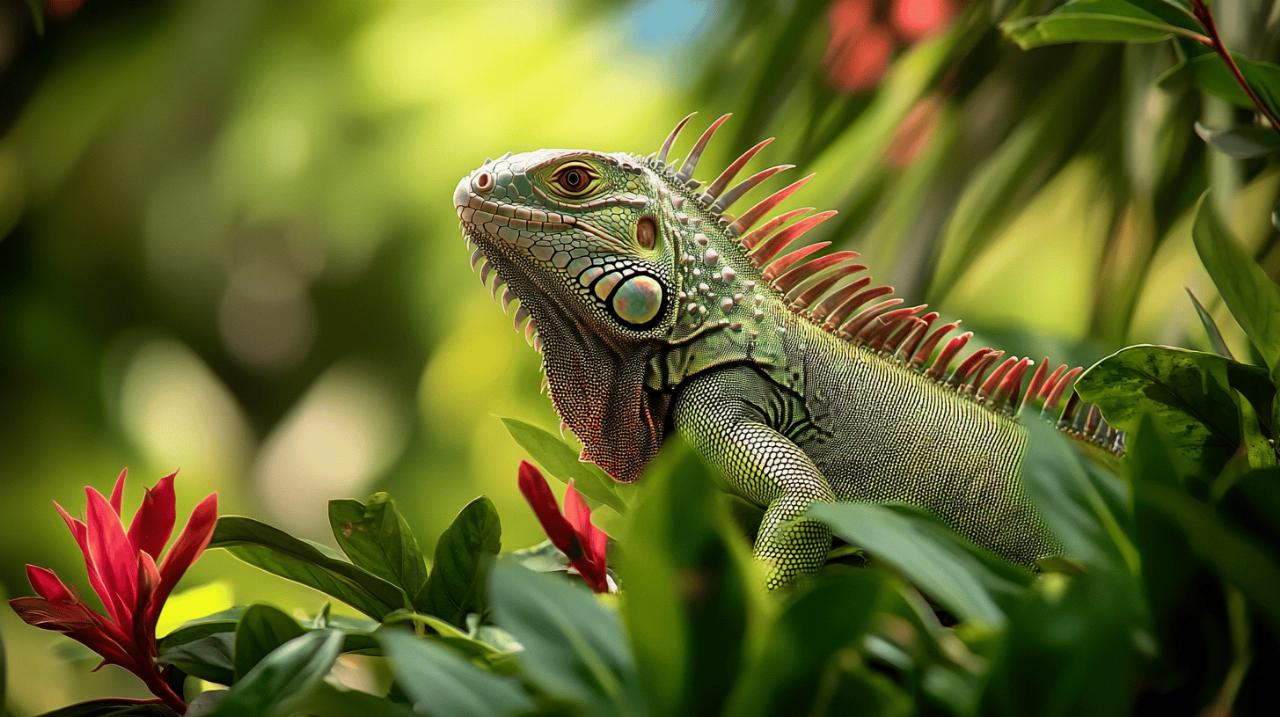The Iguane Martinique vs Other Caribbean Iguanas: Understanding the Unique Threats Facing Martinique’s Endangered Reptile
The Caribbean islands are renowned for their breathtaking landscapes and remarkable biodiversity, yet few creatures embody the fragility of this ecosystem quite like the iguanas of Martinique. Among the lush vegetation and sun-soaked coastlines, a quiet battle for survival unfolds as native reptiles face mounting pressures from invasive species, habitat destruction, and environmental changes. Understanding the plight of Martinique's endangered iguana requires a closer look at what makes this species distinct and the unique threats it encounters in its island home.
Identifying the iguana delicatissima: what sets martinique's native species apart
Distinctive Physical Characteristics of the Lesser Antillean Iguana
The Lesser Antillean iguana, scientifically known as Iguana delicatissima, stands apart from its Caribbean relatives through a series of subtle yet significant physical traits. This native species displays a pale grey colouration that contrasts sharply with the vibrant greens seen in other iguana populations across the region. One of the most telling differences lies in the absence of a large tubercle on the jowls, a feature prominently displayed by the invasive green iguana. The delicatissima's overall build is more slender and refined, which is reflected in its scientific name suggesting delicacy and elegance. These characteristics are not merely aesthetic but serve as vital identifiers for conservationists working to distinguish between native and invasive populations in the field.
Comparing Iguana Delicatissima with Green Iguanas Across the Caribbean
When comparing the native Lesser Antillean iguana with the green iguana found throughout the Caribbean, the differences extend beyond mere appearance. The green iguana, or Iguana iguana, is a robust and highly adaptable species that has successfully colonised numerous islands, often to the detriment of local wildlife. While the green iguana thrives in a variety of environments and demonstrates aggressive territorial behaviour, the delicatissima is far more specialised and sensitive to environmental changes. The green iguana's larger size and more pronounced dewlap make it easily recognisable, yet these same traits also make it a formidable competitor. Across the Caribbean, the green iguana has become a symbol of invasive success, whereas the delicatissima represents the vulnerability of endemic species facing encroachment on their ancestral territories.
The invasive species crisis: how green iguanas threaten martinique's endemic population
Competition for Resources and Territory Between Native and Invasive Species
The introduction of green iguanas to Martinique has created a dire situation for the native delicatissima population. These invasive reptiles compete directly for the same food sources, basking sites, and nesting areas that the native iguanas rely upon for survival. The green iguana's aggressive nature and larger physical stature give it a distinct advantage in these confrontations, often forcing the delicatissima into marginalised habitats where resources are scarce. In areas such as Robert and Saint Louis, where both species have been observed, the green iguanas dominate prime territories, leaving the native species to contend with less favourable conditions. This competition is not merely about survival but about the very existence of a species that has evolved over millennia to thrive in a specific ecological niche now under siege.
The Genetic Consequences of Hybridisation in Martinique's Iguana Population
Perhaps even more alarming than direct competition is the phenomenon of hybridisation between the native delicatissima and the invasive green iguana. When these two species interbreed, the resulting offspring carry mixed genetic material that dilutes the unique genetic heritage of the Lesser Antillean iguana. Over time, this genetic blending threatens to erase the delicatissima as a distinct species, replacing it with hybrid populations that lack the specialised adaptations of their native ancestors. Conservationists have documented increasing instances of hybridisation across Martinique, particularly in areas where the two species coexist in close proximity. The long-term implications of this genetic erosion are profound, as the loss of the delicatissima would represent not just the disappearance of a species but the collapse of a unique evolutionary lineage that has shaped the island's ecological identity.
Habitat Loss and Environmental Pressures Unique to Martinique's Coastal Regions
Development and Urbanisation Impact on Iguana Habitats in Robert and Saint Louis
 Martinique's growing human population and expanding infrastructure have placed significant pressure on the natural habitats that iguanas depend upon. In regions such as Robert and Saint Louis, coastal development has fragmented the landscape, reducing the availability of suitable nesting sites and foraging areas. The construction of roads, buildings, and tourist facilities has not only diminished the physical space available to these reptiles but has also introduced new hazards such as vehicle strikes and domestic predators. The lush vegetation that once provided shelter and sustenance is being replaced by manicured gardens and commercial properties, leaving the native delicatissima with fewer refuges. The islets off the coast, which once served as sanctuaries for iguana populations, now face their own challenges as rising sea levels and human disturbance encroach upon these last bastions of wilderness.
Martinique's growing human population and expanding infrastructure have placed significant pressure on the natural habitats that iguanas depend upon. In regions such as Robert and Saint Louis, coastal development has fragmented the landscape, reducing the availability of suitable nesting sites and foraging areas. The construction of roads, buildings, and tourist facilities has not only diminished the physical space available to these reptiles but has also introduced new hazards such as vehicle strikes and domestic predators. The lush vegetation that once provided shelter and sustenance is being replaced by manicured gardens and commercial properties, leaving the native delicatissima with fewer refuges. The islets off the coast, which once served as sanctuaries for iguana populations, now face their own challenges as rising sea levels and human disturbance encroach upon these last bastions of wilderness.
Climate and Geographical Factors Affecting Iguana Survival on Caribbean Islets
Beyond human activity, the iguanas of Martinique must also contend with the broader environmental shifts affecting the Caribbean. Climate change has brought more frequent and severe weather events, including hurricanes and droughts, which can devastate iguana populations. The small islets that serve as refuges for the delicatissima are particularly vulnerable to these climatic extremes, as their limited size offers little buffering capacity against environmental shocks. Rising temperatures and altered precipitation patterns also affect the availability of food plants and the suitability of nesting sites. The geographical isolation of Martinique means that these iguanas cannot easily migrate to more favourable habitats, making them especially susceptible to localised environmental changes. The combination of climatic pressures and habitat fragmentation creates a precarious situation where even small disturbances can have disproportionate impacts on the survival of these endemic reptiles.
Conservation Strategies and the Future of Iguana Delicatissima in Martinique
Current Conservation Programmes and Their Effectiveness in Protecting Native Iguanas
In response to the critical status of the Lesser Antillean iguana, conservationists in Martinique have implemented a range of initiatives aimed at reversing the decline of this species. These programmes include targeted removal of invasive green iguanas, habitat restoration projects, and captive breeding efforts designed to bolster native populations. Research initiatives have also been established to better understand the ecology and behaviour of the delicatissima, providing valuable data that informs management strategies. Monitoring programmes track population numbers and distribution, allowing conservationists to identify priority areas for intervention. While these efforts have shown some promise, the scale of the challenge remains daunting. The effectiveness of conservation measures is often constrained by limited funding, logistical difficulties in accessing remote habitats, and the ongoing influx of invasive species. Nonetheless, the dedication of local and international conservation organisations offers hope that the delicatissima can be saved from the brink of extinction.
How eco-tourism and public awareness can support wildlife preservation efforts
The role of public engagement and eco-tourism in conservation cannot be overstated. By fostering awareness of the plight of Martinique's native iguanas, conservationists aim to build a constituency of support that extends beyond the scientific community. Eco-tourism initiatives that highlight the unique wildlife of the island provide both economic incentives for conservation and educational opportunities for visitors. When tourists witness the beauty and vulnerability of the delicatissima in its natural habitat, they become ambassadors for its protection, spreading awareness and supporting conservation efforts through their patronage. Public awareness campaigns have also been instrumental in reducing harmful behaviours such as habitat destruction and the release of pet iguanas into the wild. Schools and community groups in Martinique are increasingly involved in conservation education, ensuring that future generations understand the value of preserving their natural heritage. The integration of local communities into conservation planning is essential, as sustainable solutions must balance the needs of both people and wildlife. Through collaborative efforts that combine scientific expertise with public support, there is genuine hope that the iguana delicatissima will continue to thrive on Martinique, remaining a living symbol of the island's rich biodiversity.
